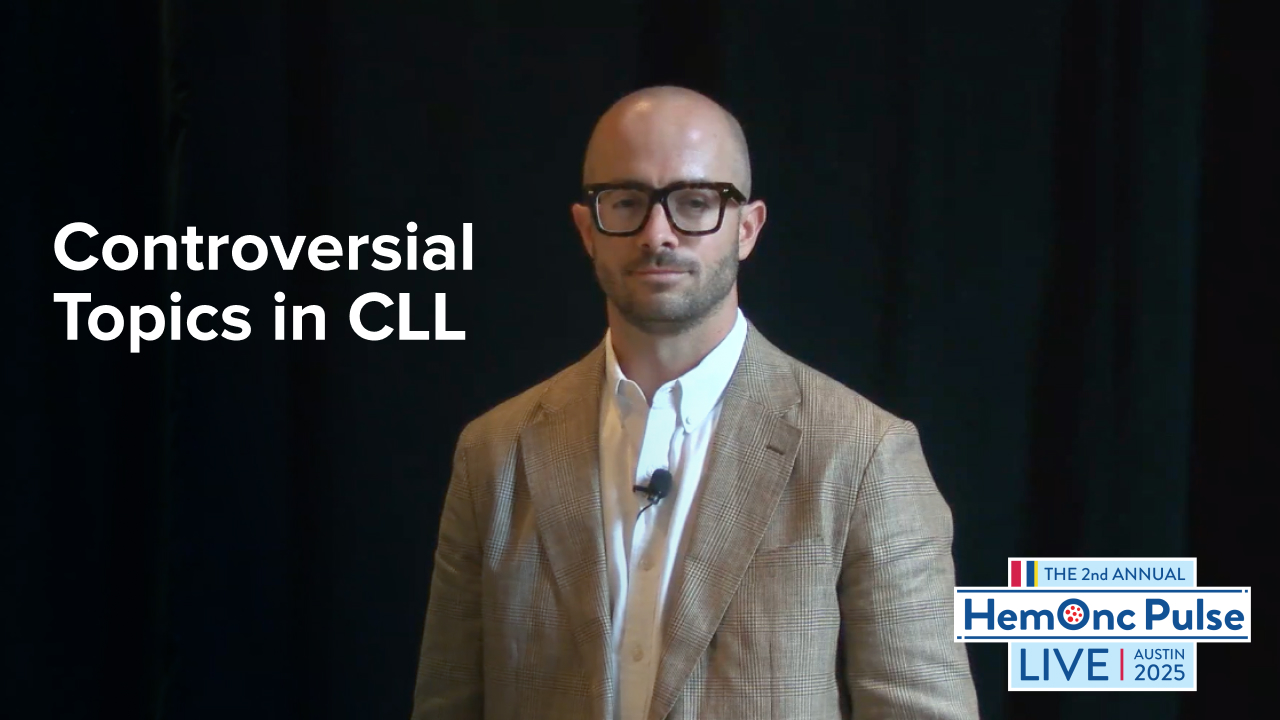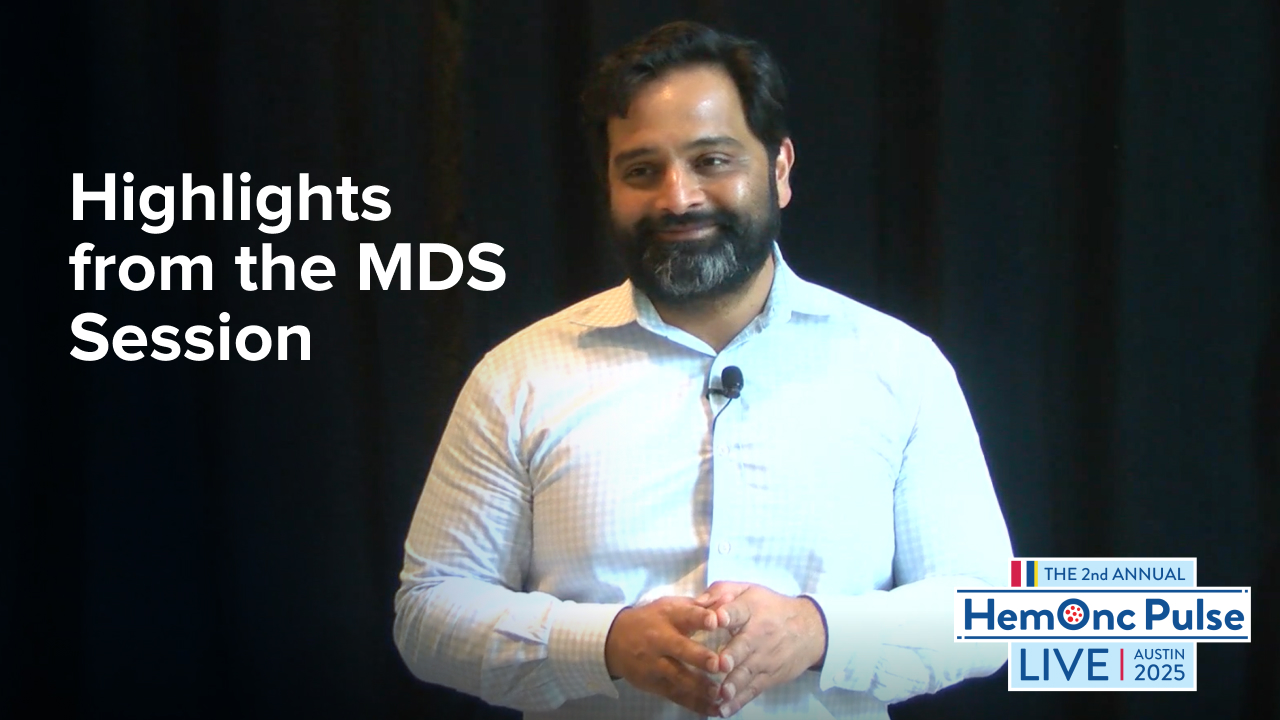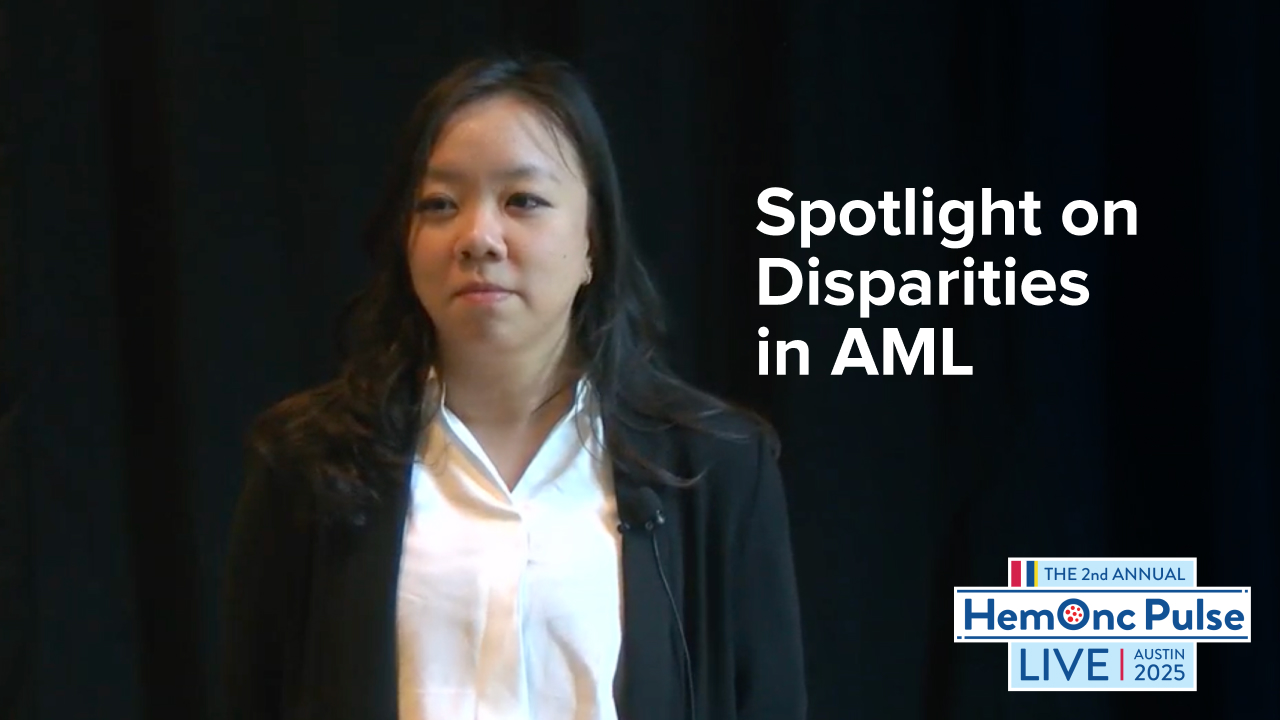Panel Reacts to Full Analysis of the COMMANDS Trial of Luspatercept for MDS
By Guillermo Garcia-Manero, MD, Sangeetha Venugopal, MD, George Yaghmour, MD, Jamie Koprivnikar, MD - Last Updated: December 18, 2023A roundtable discussion, moderated by Guillermo Garcia-Manero, MD, Blood Cancers Today Associate Editor, of the University of Texas MD Anderson Cancer Center, focused on the latest data in the treatment of low-risk myelodysplastic syndromes. Dr. Garcia-Manero was joined by Jamie Koprivnikar, MD; George Yaghmour, MD; and Sangeetha Venugopal, MD.
In the next segment of the roundtable series, the panel shares their thoughts on the full analysis of the COMMANDS study, presented at the ASH 2023 Annual Meeting, which compared luspatercept with epoetin alfa in transfusion-dependent patients with low-risk myelodysplastic syndromes.
Watch the next segment in this series.
—
Dr. Garcia-Manero: Let’s start with the first topic that we want to address today. That is the COMMANDS trial. The COMMANDS trial was first presented at ASCO last year, then EHA, and published in a major paper in the Lancet, but that was an interim analysis. Actually, the full analysis of COMMANDS is going to be presented tomorrow at this ASH [2023 Annual] Meeting. Sangeetha, what is your opinion of this update or final analysis of the study?
Dr. Venugopal: The one thing I was looking for was the ring sideroblast status. In patients with ring sideroblast status positive, luspatercept did have a robust response in those who are transfusion-dependent. But in those with ring sideroblast-negative status, both luspatercept and recombinant erythropoietin had comparable responses. I’m looking forward to dig into the data. Why was this happening?
Dr. Yaghmour: COMMANDS study was practice-changing for us when we saw the data that showed us significant improvement in transfusion independency in low-risk MDS [myelodysplastic syndromes], and based on the COMMANDS study, we all got excited; we have a new now standard of care for a patient, even naïve to erythropoietin-stimulating agent (ESA). The question is in the ring sideroblast (RS)-negative or without spliceosome mutation situation, despite that, it’s not inferior, is it going to be better in the survival? What is the additional mutation that would add to the decision of the treatment or the combination therapy? It’s more to investigate and to discuss in depth.
Dr. Garcia-Manero: Wonderful. Jamie?
Dr. Koprivnikar: I think it’s interesting, even though we did see approximately equivalent response rates in patients who had RS-negative disease, certainly we saw a longer duration of response, and I think the dosing interval was a bit more convenient at every three week dosing for luspatercept. I think based on the data we have now, I agree with you, the forthcoming data will be really interesting. I still generally will choose luspatercept up even for my RS-negative patients.
Dr. Garcia-Manero: I think what we are going to see tomorrow is going to show actually that this data of the RS-positive versus RS-negative in terms of response neutralizes a little bit. The update shows that they’re kind of very similar if not identical, and something that Jamie mentioned that I think is very critical is what I refer to as the quality of the response, that is the duration of response.
From the beginning, what really attracted me to those results was not just the higher response rate, but actually the fact that those results are significantly longer. Something that we are starting to see in this updated data is actually the duration of response in RS-negative patients appears to be longer than actually the RS-positive. I don’t know if there’s a statistical power. We for sure, I agree, we need a lot more follow-up in understanding this.
But the question that I see in the community is this issue that Jamie was addressing already of, do you treat RS-negative patients at the University of Miami with an ESA or do you think that the data with luspatercept is good enough to just use that in frontline?
Dr. Venugopal: I would agree with Jamie in using luspatercept, even in RS-negative patients, and I completely agree with you about the quality of response; the duration of response matters more than the RS-negative or the RS-positive status.
Dr. Yaghmour: I support and I agree that seeing the curve of the duration of the response and we know they both have similar transfusion independency, I would be still more encouraged to consider luspatercept and especially at this ASH, we have some data focusing on RS-negative and additional mutation of the COMMAND study, which is interesting that high-risk mutation still showing us luspatercept might be a winner.
Dr. Garcia-Manero: Can you expand a little bit on this? How important are these molecular characterizations of the disease when we…
Dr. Yaghmour: It’s a good question. It’s still so controversial is having more mutation panel and including the IPSS-M [Molecular International Prognostic Scoring System] scoring system right now and having those bad players, not the spliceosome mutation. In the arm of the RS-negative, there is some follow-up data at this ASH, I noticed the abstract talking about in RS-negative, if you have the higher-risk luspatercept population did better than the erythropoietin-stimulating agent. I don’t know if you agree or what do you think about it?
Dr. Koprivnikar: Yeah, I think it’s interesting. There were a number of interesting COMMANDS-adjacent abstracts. To the point of the durability of response, one of them did show that in the RS-negative patient population, they kind of had a slow steady deepening of response with really a maximal time to response of 48 weeks, which is a long time. Sometimes my patients get impatient, so I’m really going to have to convince them that they need to take their time and wait for it.
There’s also some interesting real-world data focused around luspatercept, and what I found interesting is that more than half of patients based on some of this real-world information, were actually started on treatment when they were not actually requiring transfusions.






 © 2025 Mashup Media, LLC, a Formedics Property. All Rights Reserved.
© 2025 Mashup Media, LLC, a Formedics Property. All Rights Reserved.